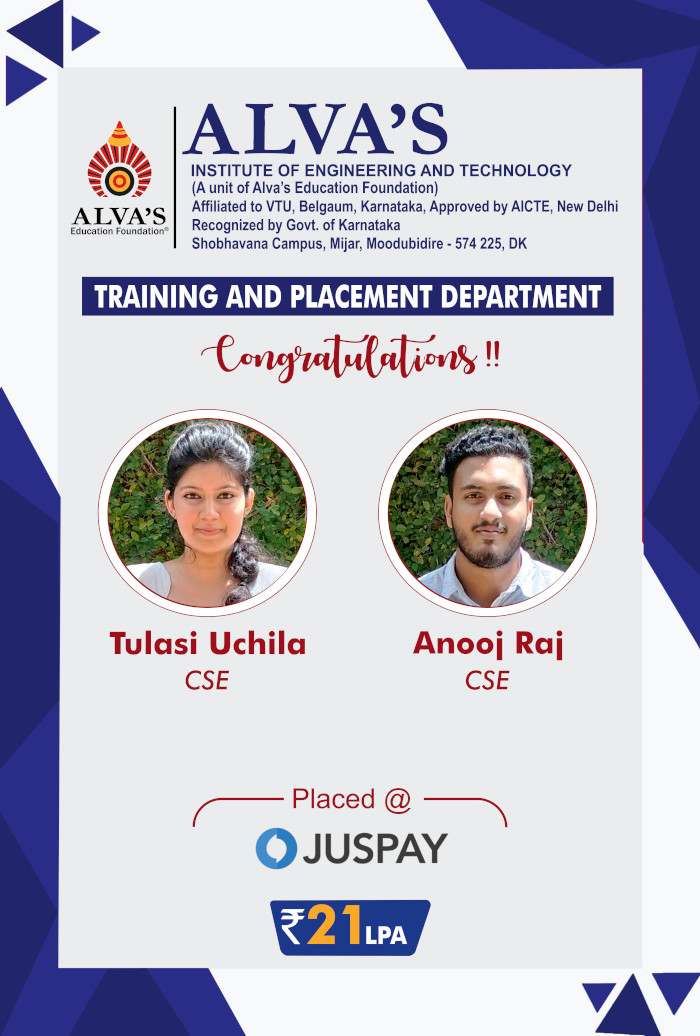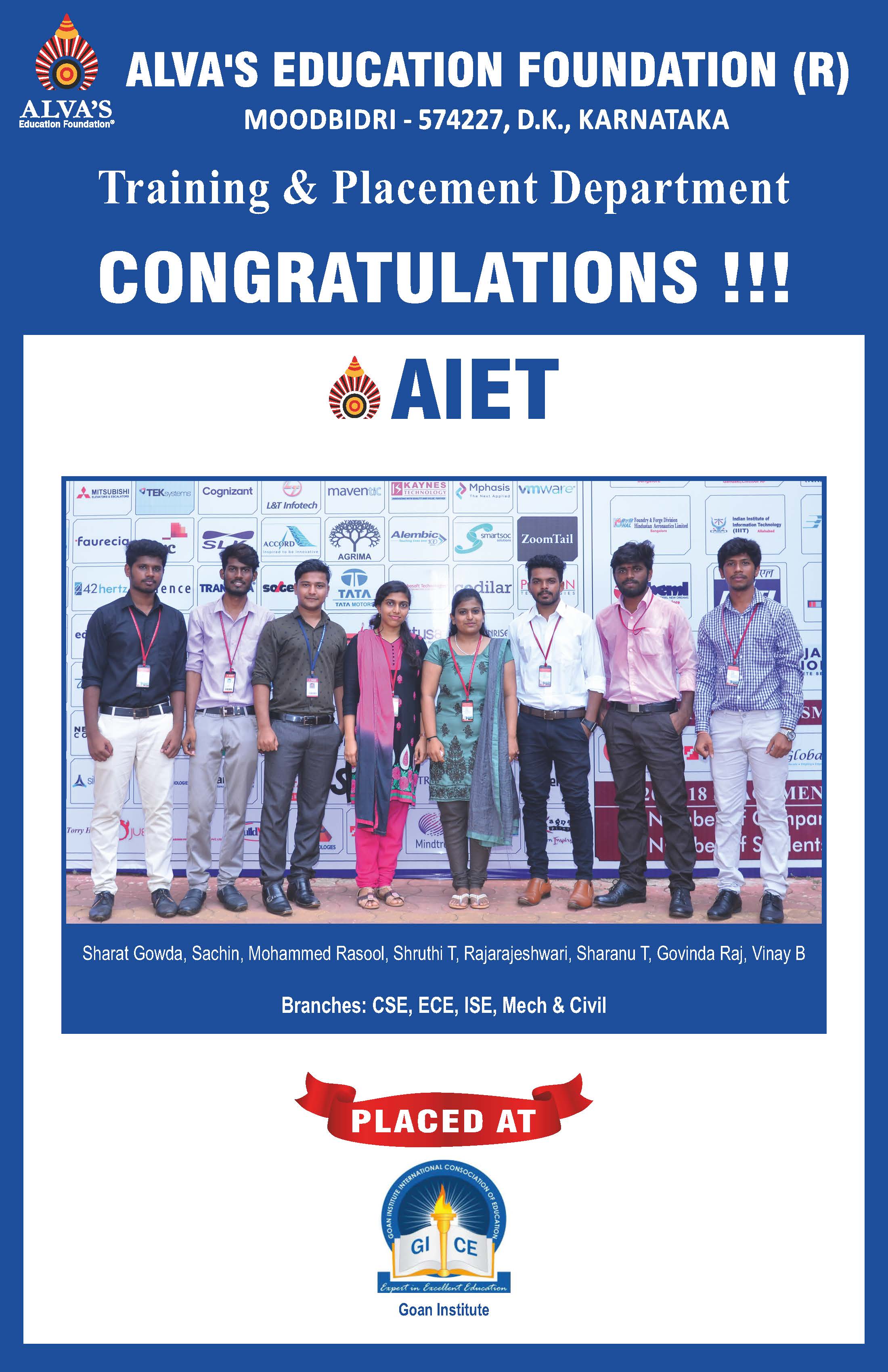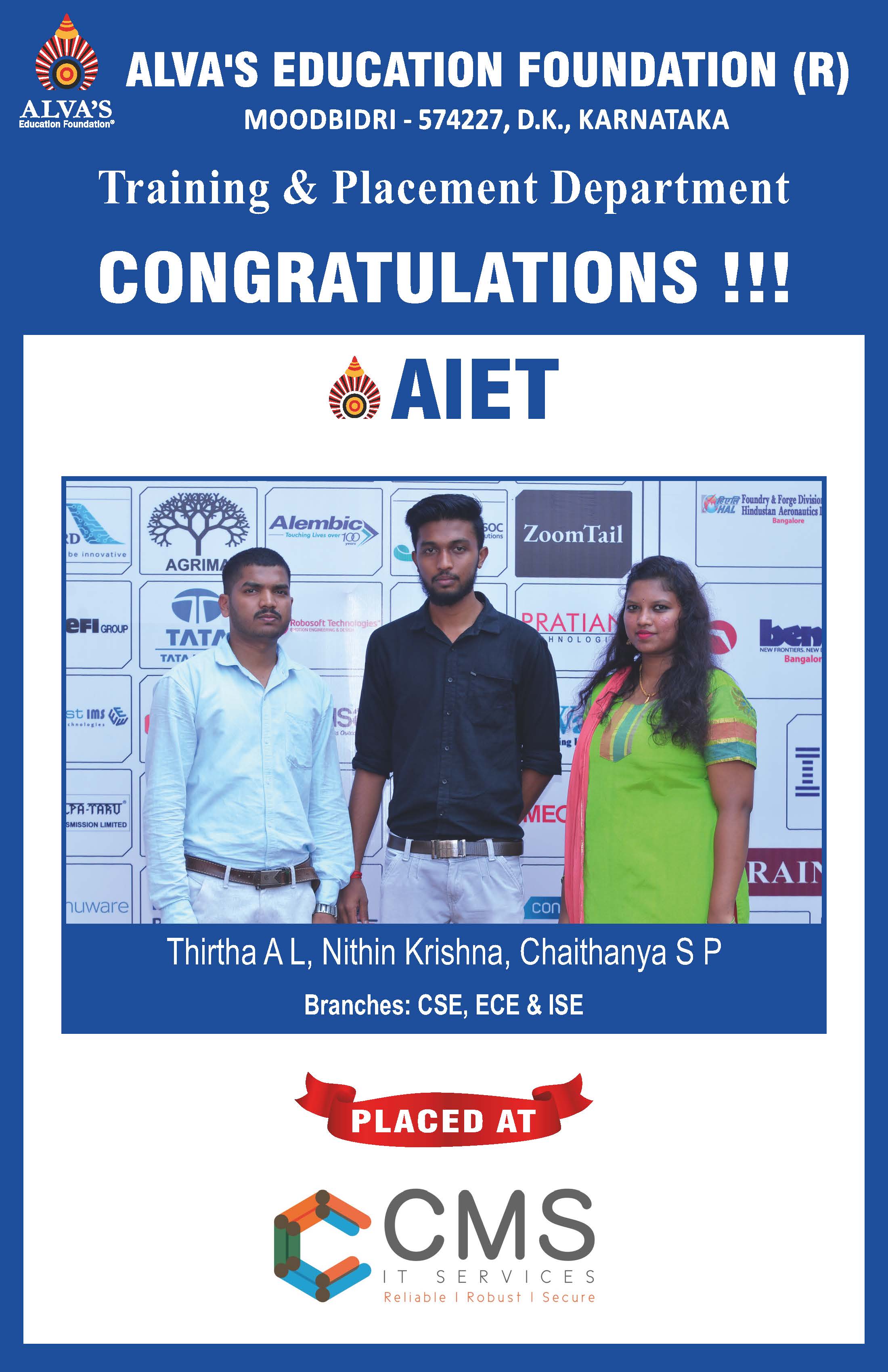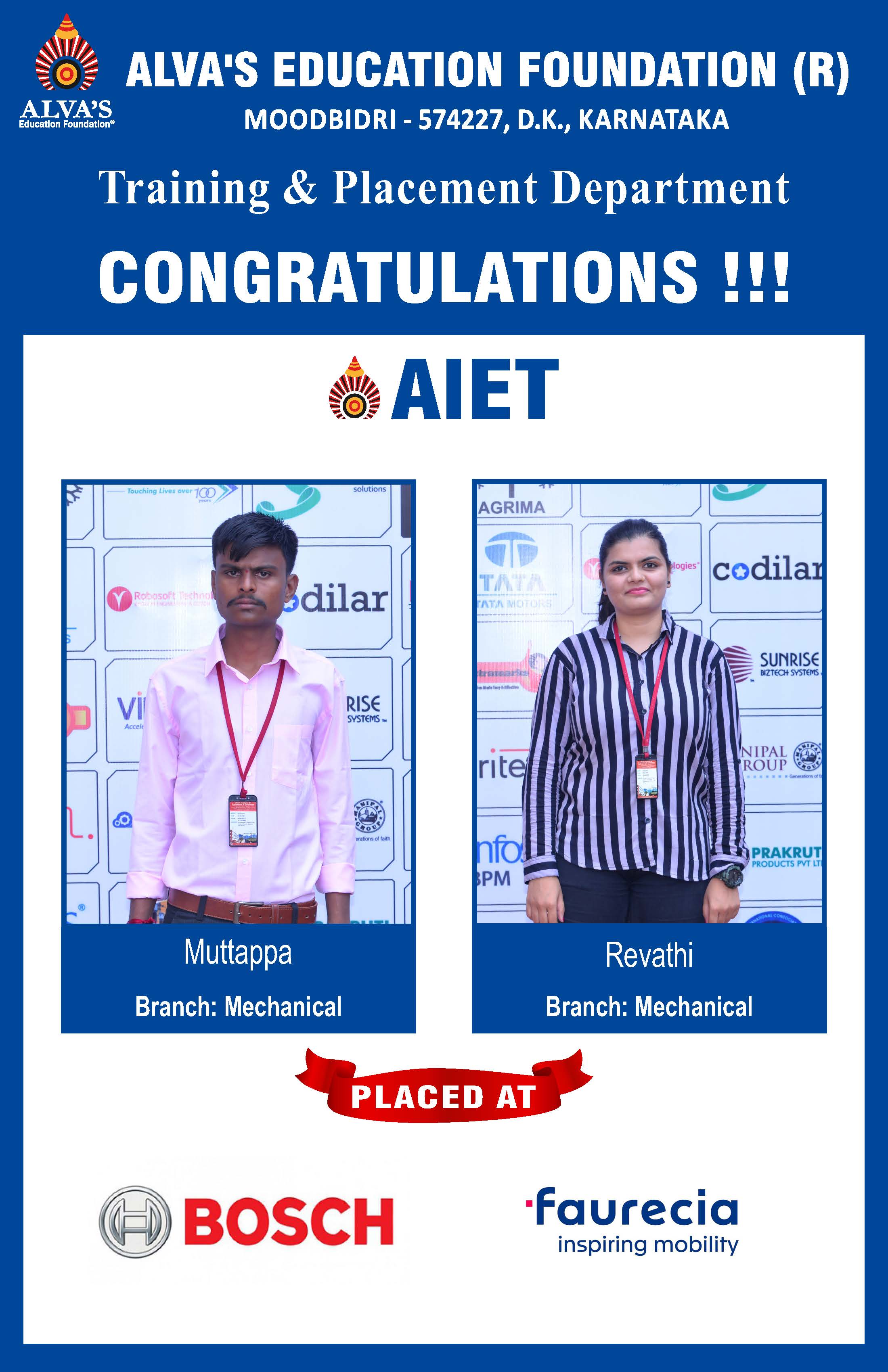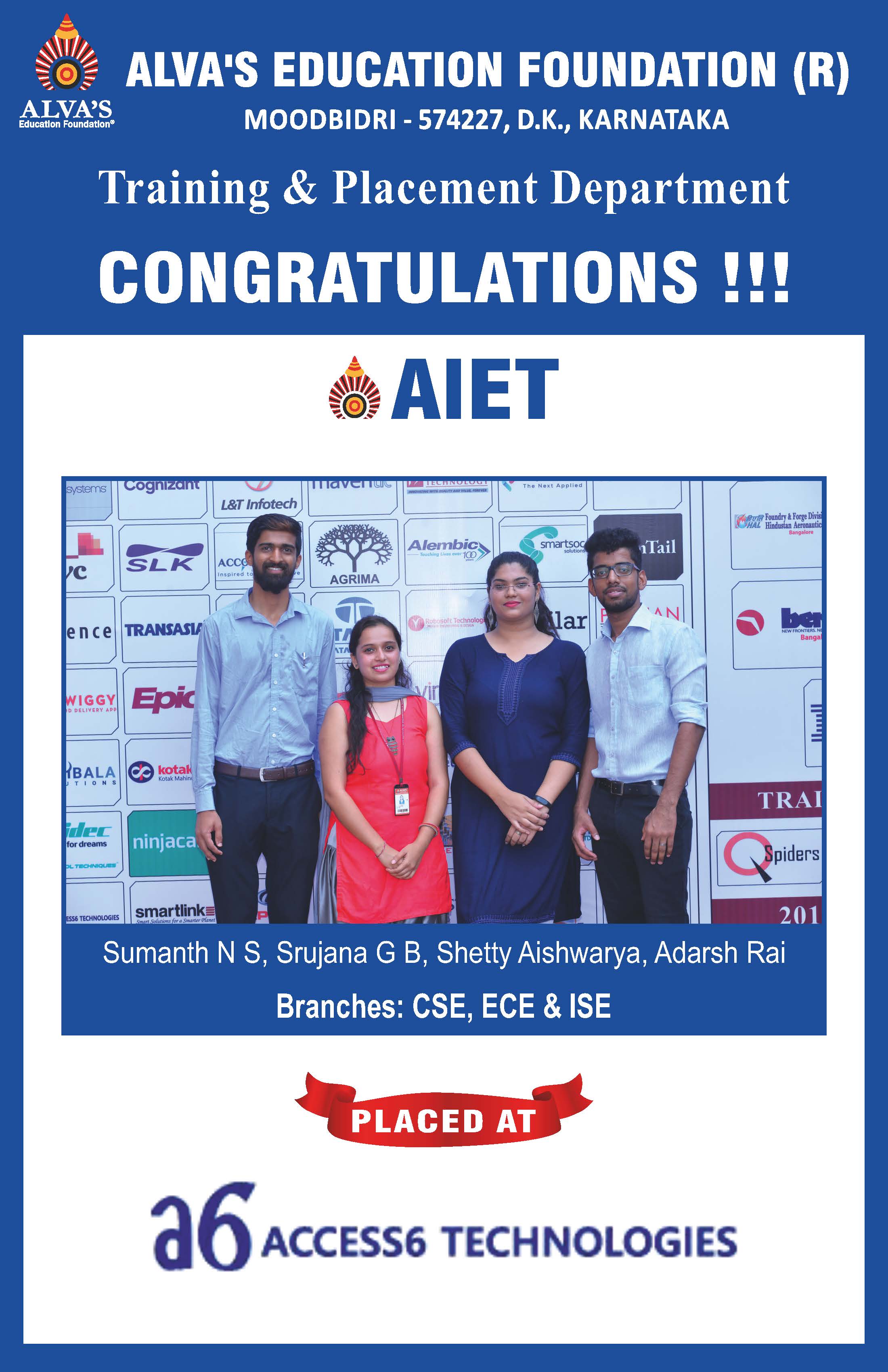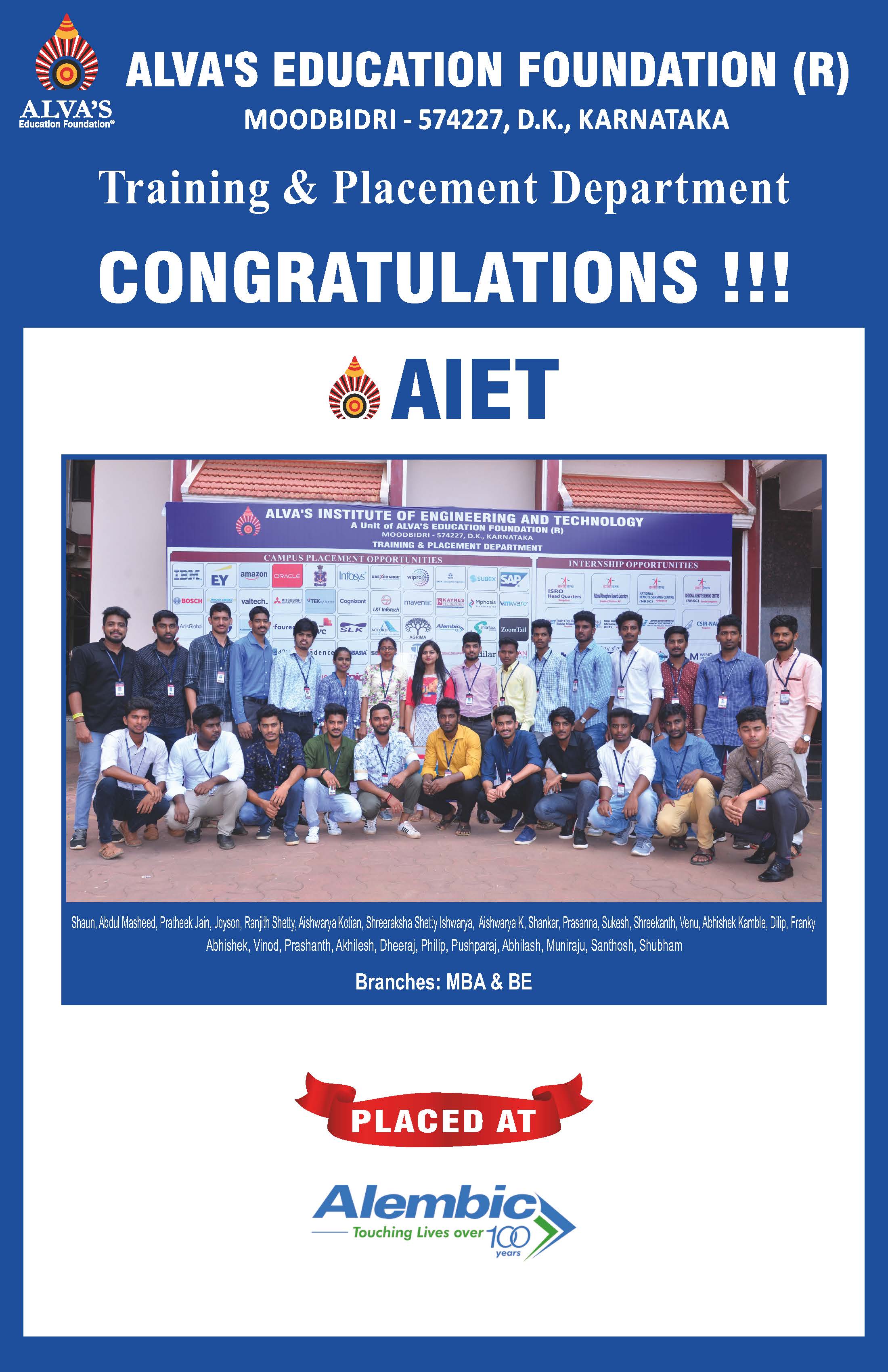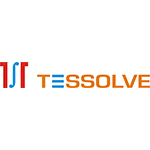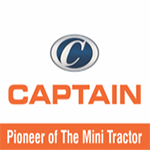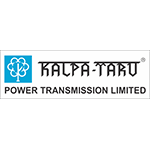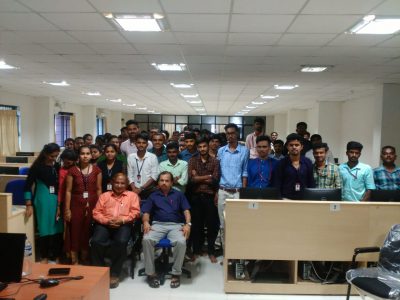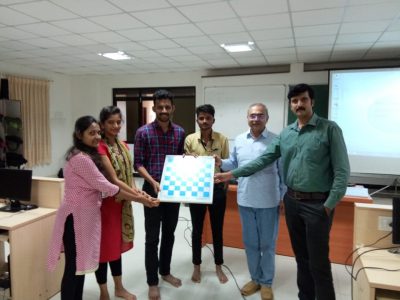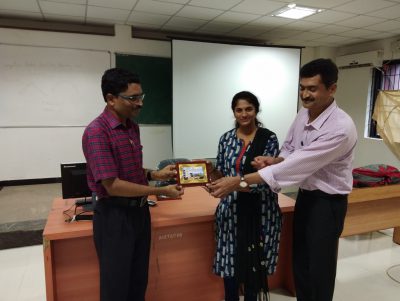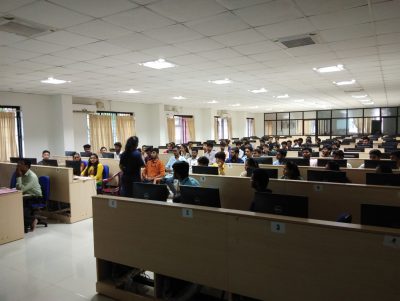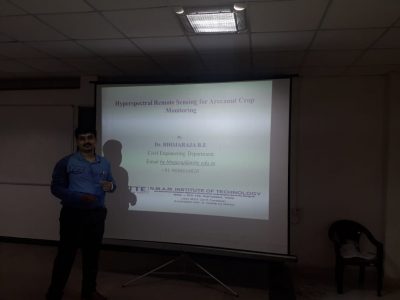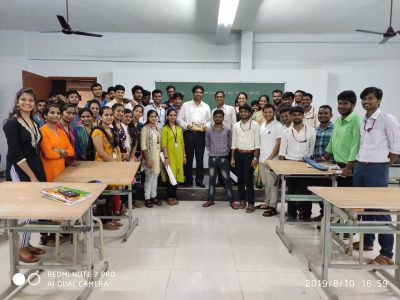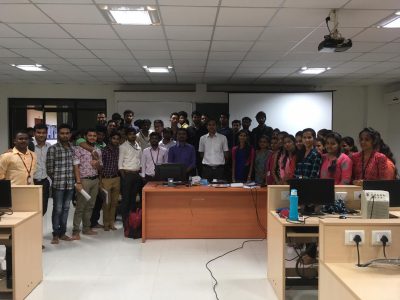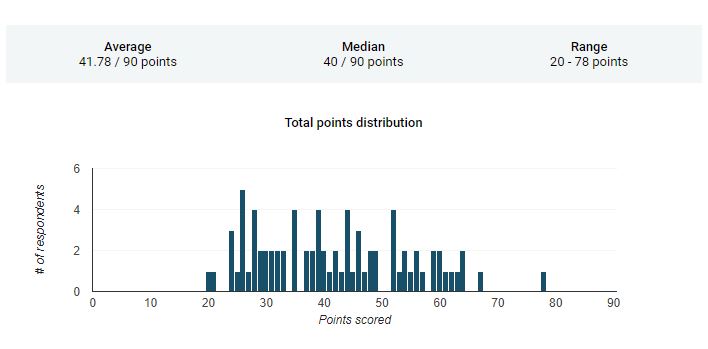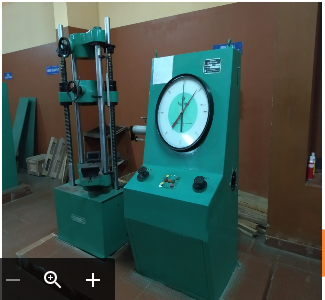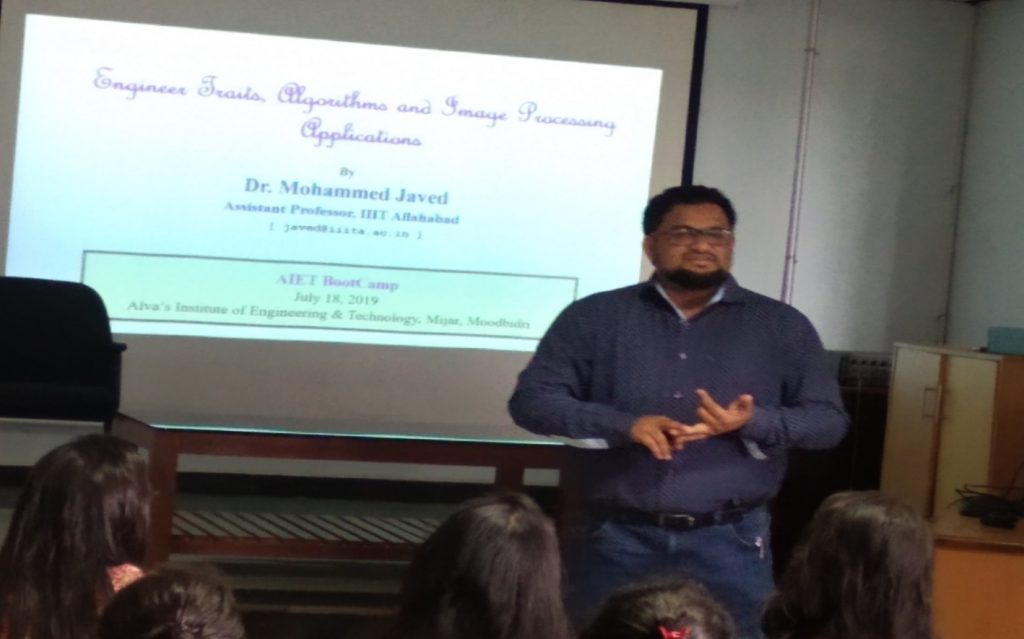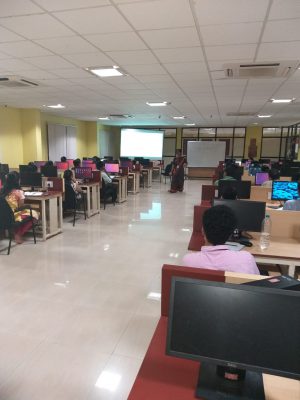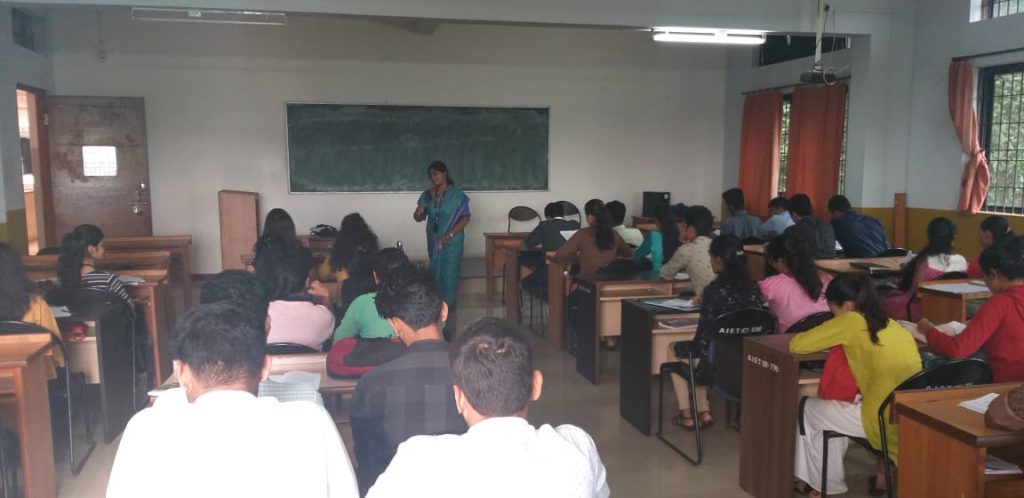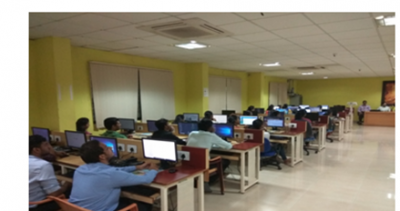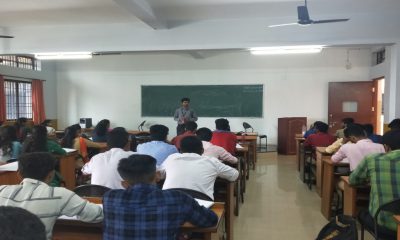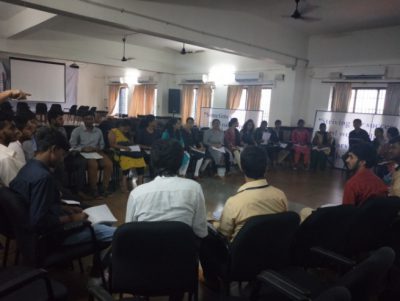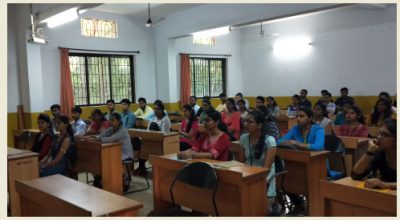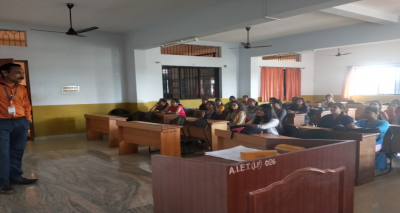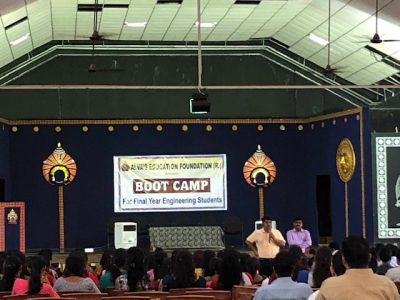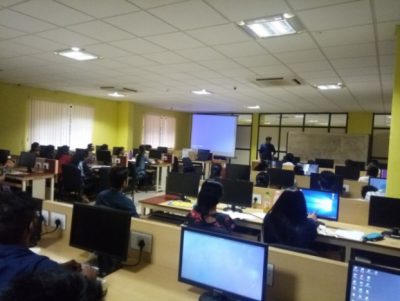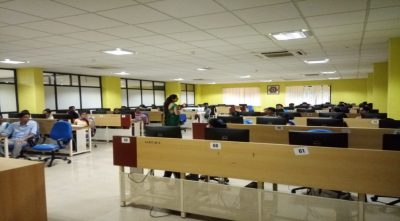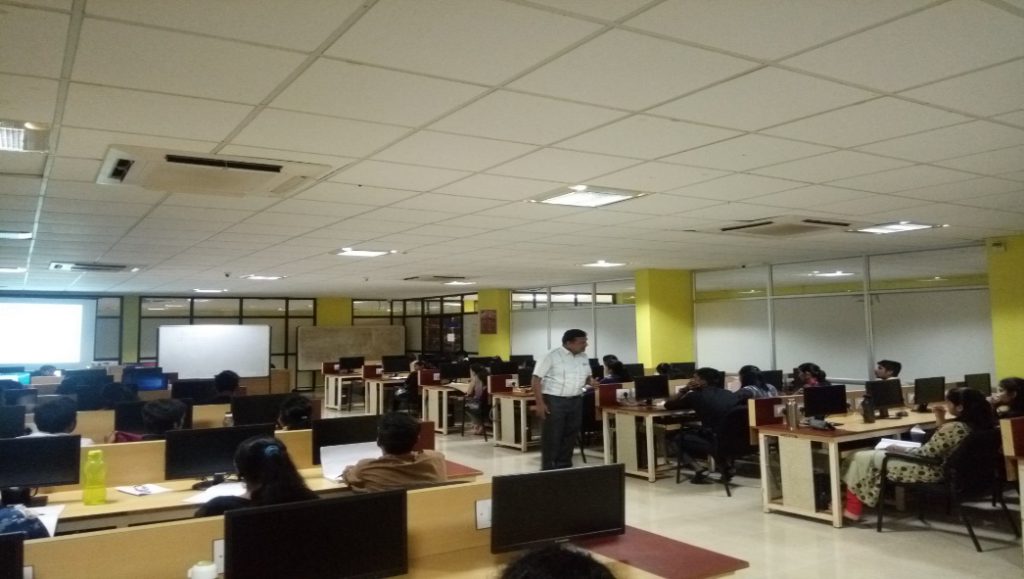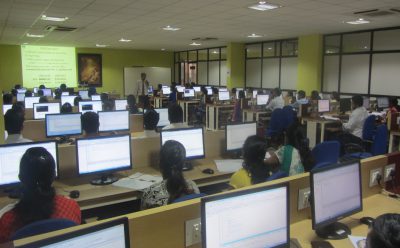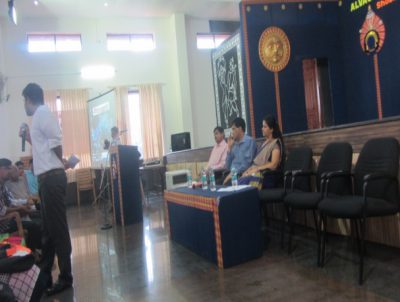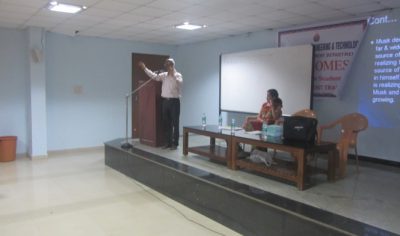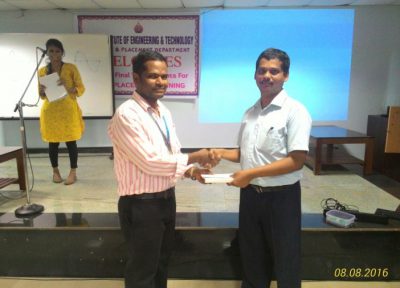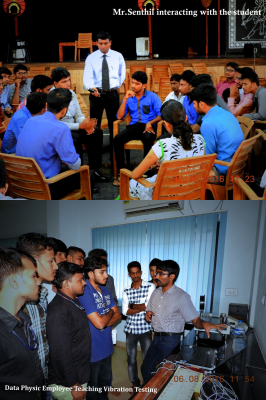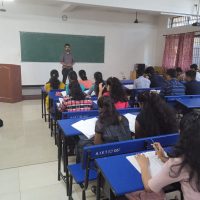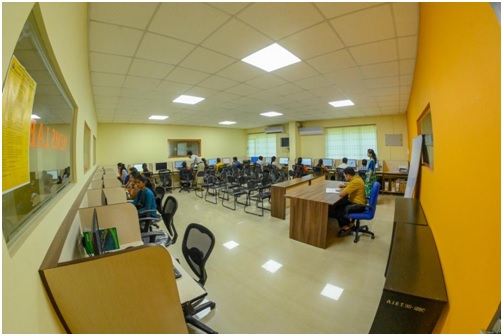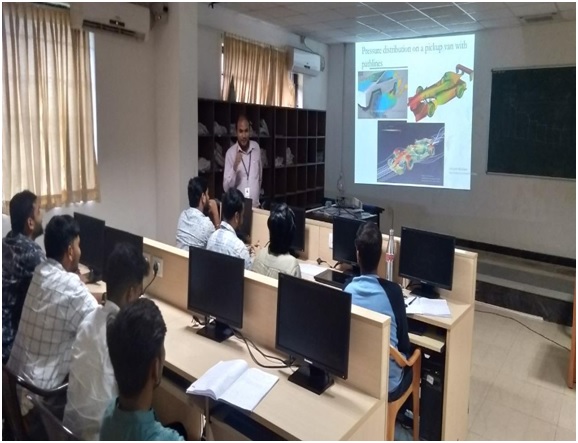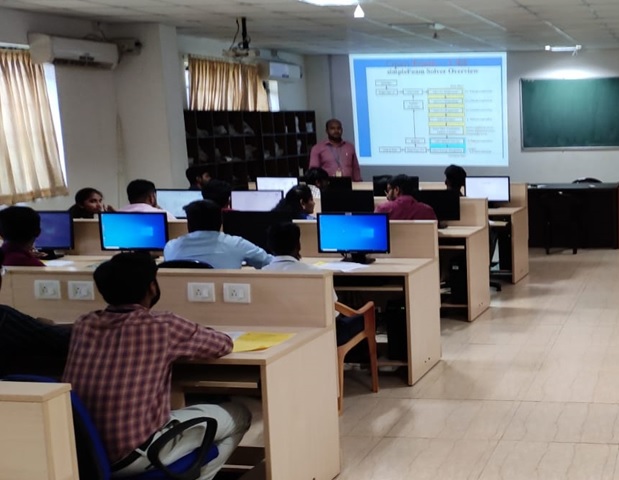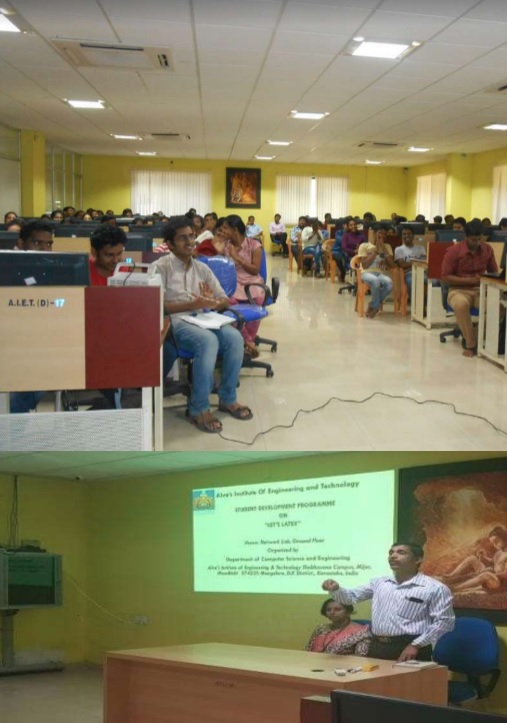Students had session on various topic like python application, web programming, database applications, Big data analytics, OOMD, OOPs concepts, Algorithms, Java, IoT etc., by faculties of our department.
- Object Oriented Concepts with C++ by Ms. Shilpa.
The session started with explanation on Basics of Object Oriented Concepts such as Classes, Objects and Member Function. There are 4 major principles that make an language Object Oriented. These are Encapsulation, Data Abstraction, Polymorphism and Inheritance. These are also called as four pillars of Object Oriented Programming. Encapsulation is the process of hiding the information by warping data inside the classes. Classes contain member function and member data.
Different types of member functions were discussed such as static member function, constant member function, inline member function and Friend functions. Inline function is a function that is expanded in line when it is called. When the inline function is called whole code of the inline function gets inserted or substituted at the point of inline function call. A static member function is a special member function, which is used to access only static data members, any other normal data member cannot be accessed through static member function. A const or a constant member function can only read or retrieve the data members of the calling object without modifying them. A friend function of a class is defined outside that class’ scope but it has the right to access all private and protected members of the class.
Polymorphism in C++ means that a call to a member function will cause a different function to be executed depending on the type of object that invokes the function. Types of polymorphism was discussed.
All the concepts were demonstrated with programming example and later MCQ test was conducted related to the concepts which were taught.
- Networking by Ms. Ankitha Shetty.
She addressed on various topics of networks like Classification of network: based on: Transmission media, Topology, Size of the network. She also discussed about working of Packet switched and circuit switched network and also Difference of the same. Functions of each layer of OSI and TCP/IP model. Five major processing-mode categories of Firewalls that is Packet-filtering firewalls, Application gateways, Circuit gateways, MAC layer firewalls, Hybrids was explained Classification of IP address, introduction on IPV4 and IPV6, IP address classes, static and dynamic assignment, port number was explained. Basics, types and working of DNS were explained to students. Cryptography: Block cipher and Stream cipher, Symmetric, Asymmetric method of cryptography. MCQ test was conducted related to the concepts which were taught.
- Python Application Programming by Prof. Sayeesh
The session started with Introduction to Python, Identifiers and keywords, operators, conditional statements, looping statements, functions, built-in functions, lists, tuples, dictionary, regular expressions. Different programming examples for conditional statements- if, if-else, nested if, chained if and looping statements- while, for. Different programming examples for lists, tuples, dictionary and regular expression. Session was concluded by solving different types of objective type questions.
- Big data analytics by Sumith N
As the technology is evolving, it is producing enormous data. The internet, its users and devices are the largest contributors of data. Big data has specific characteristics, namely volume, velocity, varsity and variety. Due to these characteristics, analyzing big data is a challenge.
Machine learning algorithms plays a vital role in analyzing big data. Machine learning algorithms can be broadly categorized into supervised, unsupervised and reinforcement learning techniques. A supervised learning techniques build a models after learning sufficiently from the examples. Data for such a learning system are always classified. Some of the algorithms discussed in the session were K- nearest neighbours, decision tree, linear regression, naïve Bayesian classifiers. Hands on training was given to students.
An unsupervised learning techniques builds the models by looking at the input data without prior training. The dataset is always unclassified. Some of the algorithms are K- means cluster analysis, PCA and factor analysis. Hands-on for k means was given.
Further, evaluation of the model was demonstrated with hands on training.
- Ms Shruthi Shetty J 18-07-2019 Database Applications
The session started with the Introduction to Database and Database Management Systems. Explained advantages and applications of DBMS. The types of Database languages like Data Definition Language (DDL), Data Manipulation Language (DML), Transaction Control Language (TCL) were also explained. Commonly used terminologies like Entity, Attributes, types was attributes and various integrity constraints were explained.
Keys like Primary, Foreign, Candidate and Super keys with explained with an example. Programming language- Structured Query language and its various constructs were explained with Relational Algebra functions and examples. Example queries were solved in the session.
Functional dependency: An attribute A is said to functionally determine attribute B if each value of A is associated with only one value of B. A is called the Determinant while B is called the Dependent. Full Functional Dependency: If A and B are attributes of a relation, B is fully functionally dependent on A if it is functionally dependent on A, but not on any subset of A. Partial Functional Dependency: If A and B are attributes of a relation, B is partially dependent on A if it is dependent on subset of A. Transitive Functional Dependency: If A, B, and C are attributes of a relation such that if A -> B and B -> C, then C is transitively dependent on A via B. Along with this Normalization and normal forms were explained. Three normal forms were explained with example.
All the concepts were explained with example and later MCQ test and query both on SQL and Relational Algebra was conducted related to the concepts which were taught.
- Algorithms by Mrs. Mangala Kini
Algorithms are an essential aspect in today’s world. It is a basic to all the problem solving. The session included introduction to algorithms. Asymptotic notations are the important concepts that help in knowing the efficiency of any algorithms. There are three notations: O-notation, Ө-notation, Ω- notation. The basic selection of these notations for various algorithms was given. Followed by explanation on various techniques like Divide and conquer brute force, decrease and conquer, dynamic programming, backtracking, etc. The algorithms that implement the above technique were also explained in the session. The algorithms namely sequential search, linear search, bubble sort, merge sort, quick sort, heap sort was explained along with its efficiency and applications. Some problems like Knapsack, travelling salesman was solved in the session. Graphs are also a type of problem that can be solved by various algorithms like Floyd, Warshall was explained with example.
- Web programming by Mrs. Harshitha G M
Topics Covered: Introduction to Web programming, Web servers, Web browsers, DNS, Web, Internet, History, and Practical Implementations of html.
The session started by giving introduction to Web Programming: A brief History of the internet, web, web servers, web browsers, URL’s, DNS, HTTP was discussed. Practical Implementations of html- all basic tags, with the concepts of CSS and hyperlinks and images.
- Database Management System by Ms. Reena Lobo
The session included discussion on Different types of keys , attributes, Entities. Relational algebra-Select and project (Unary operators), join and division(Binary operators).SQL- Insert, delete and update statements in SQL. Exist and not exists, Like, Between and minus operators.
All the concepts were demonstrated with examples and later test was conducted related to the concepts which were taught.
- Mobile application development by Ms. Reena Lobo
The session started by informing about Basics of Android such as Introduction to android, setting up android studio, setting up AVD(Android Virtual Device).Discussed about different files in android such as java, manifest and resource. Different types of Layouts such as Linear, relative and absolute layout and also different types of orientation. Creating a new project and create app with .xml and .java file.Unlike Java (which is Back Bone of android app), xml helps to design any android app , how it will look , how components like buttons , textview , etc will be placed and their styling. Apart from these .xml is also used for parsing data either from database or server into your android application (Xml parsing). Android Studio is an IDE tool which is used to create Android Apps. The language used to develop an android app is Java.
During the session students were introduce to various aspects of Latex tools as follows:
Installing Latex: Latex is a free software and can be downloaded from miktex.org. The editor can also be downloaded from texstudio.org.
Input file structure: In a LATEX environment, LATEX takes the role of the book designer and uses TEX as its typesetter. But LATEX is “only” a program and therefore needs more guidance. The author has to provide additional information to describe the logical structure of his work. This information is written into the text as “LATEX commands.”
Following environment variables are used to further add contents to the document
- Environments:
- Header and footer
- Title page
- Section and paragraph
- Figure
- Table
- Enumerations and lists
- Math equation
- References



